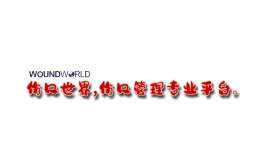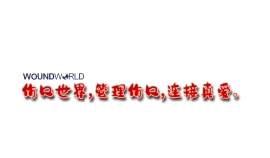文献精选
To the Editor: Pernio, also referred to as chilblains, is a rare inflammatory condition presenting as painful swelling and erythema of acral sites upon cold exposure.
While pathophysiology is uncertain, vasospasm is likely at play, akin to Raynaud syndrome. 1 Many cases of pernio are often thought to be idiopathic, but its presence often prompts further investigation. Currently, there is a paucity of literature exploring the association between pernio and connective tissue diseases (CTD) besides in cutaneous lupus.2
Therefore, we performed a population-level retrospective cohort study to evaluate the association between pernio and autoimmune CTD in the absence of Raynaud’s
Kazuhisa Maeda1 Zheng Zhou2 Miao Guo2 Jinlong Zhang2 Lang Chen3 Fan Yang2
1 School of Bioscience and Biotechnology, Tokyo University of Technology, Hachioji, Tokyo, Japan
2 Mageline Biology Tech Co., Ltd., Wuhan, Hubei, China
3 Bionics Program, Tokyo University of Technology Graduate School, Hachioji, Tokyo, Japan
Correspondence
Kazuhisa Maeda, School of Bioscience and Biotechnology, Tokyo University of Technology, 1404-1 Katakura, Hachioji, Tokyo 192–0982, Japan.
Email: 该Email地址已收到反垃圾邮件插件保护。要显示它您需要在浏览器中启用JavaScript。
Abstract
Background: It is known that heparinoid, a mucopolysaccharide polysulfate, is effective in improving rough skin and promoting blood circulation as medicines for diseased areas. However, heparinoid has a molecular weight of more than 5000 and cannot penetrate healthy stratum corneum.
Objective: We tested the efficacy of sulfated oligosaccharides with a molecular weight of less than 2000 on the human skin barrier function and moisturizing function.
Methods: We measured the transepidermal water loss (TEWL) of a three-dimensional human epidermis model cultured for 3 days after topical application of sulfated oligosaccharides, then observed the effects on TEWL suppression. The mRNA levels of proteins involved in intercellular lipid transport and storage in the stratum corneum, and moisture retention were measured using RT-qPCR.
Results: An increase in the mRNA levels of the ATP-binding cassette subfamily A member 12 (ABCA12), which transports lipids into stratum granulosum, was confirmed. Increases were also observed in the mRNA levels of filaggrin (FLG), which is involved in the generation of natural moisturizing factors, and of caspase-14, calpain-1 and bleomycin hydrolase, which are involved in the degradation of FLG. Antibody staining confirmed that the application of sodium trehalose sulfate to 3D model skin resulted in more ABCA12, ceramide, transglutaminase1, and FLG than those in controls. In a randomized, placebo-controlled, double-blind study, participants with low stratum corneum water content applied a lotion and emulsion containing sodium trehalose sulfate to their faces for 4 weeks. Sodium trehalose sulfate decreased the TEWL and increased the stratum corneum water content.
Conclusion: These results suggest that cosmetics containing sodium trehalose sulfate act on the epidermis by increasing barrier factors and moisturizing factors, thereby ameliorating dry skin.
KEYWORDS
moisturizing, skin barrier function, sodium trehalose sulfate, sulfated oligosaccharides
This is an open access article under the terms of the Creative Commons Attribution-NonCommercial-NoDerivs License, which permits use and distribution in any medium, provided the original work is properly cited, the use is non-commercial and no modifications or adaptations are made.
© 2024 The Authors. Skin Research and Technology published by John Wiley & Sons Ltd.
Kyung Min Kim, Ji-Won Song, Chang-Wan Lee, Du-Seong Kim, Johann Sohn, and Seunghun Lee*
Biohealthcare R&D Center, HYUNDAI BIOLAND Co., Ltd., Ansan 15407, Republic of Korea
Received: June 26, 2023
Accepted: September 19, 2023
First published online:
October 19, 2023
*Corresponding author
Phone: +82-31-8085-7514
Fax: +82-31-8085-7605
E-mail: shunlee@hyundaibioland.
co.kr
Supplementary data for this paper are available on-line only at http://jmb.or.kr.
pISSN 1017-7825
eISSN 1738-8872
Copyright © 2024 by the authors. Licensee KMB. This article is an open access article distributed under the terms and conditions of the Creative Commons Attribution (CC BY) license.
In the regulation of inflammatory responses and skin homeostasis, the skin and its microbiota are closely related. Studies have reported that lactic acid bacteria extracts can improve the skin condition and microbiota. In our previous study, we developed probiotic lysates, which are efficacious in improvement of human skin cells and the skin barrier. The skin-moisturizing effect of Dermabiotics HDB (HDB) prepared with Lactiplantibacillus plantarum, and the correlation between changes in the skin microbiota and moisture contents, were evaluated and analyzed in clinical trials. The clinical parameters on the cheeks of 21 female participants were measured using biophysical tools before and after (2 weeks) using HDB or control. The skin microbes were collected and identified using 16s rRNA gene sequencing. HDB significantly improved moisture intensity, transepidermal water loss (TEWL), and hot flush level on the cheek. The beta-diversity of the skin microbiota was different from that of the control in the unweighted UniFrac principal coordinate analysis after using HDB. The genus Lawsonella demonstrated a positive correlation with TEWL and a negative correlation with the moisture contents of the keratin layer, regardless of the use of HDB and control. Conversely, after HDB use, the genus Staphylococcus was increased and associated with a lower hot flush level, while the genera of the phylum Proteobacteria tended to decrease, which is associated with an improved skin condition. Overall, HDB showed clinically proven effects, including skin moisturization with regulation of the skin microbiota.
Keywords: Probiotics, cell lysate, skin moisturizing, skin microbiota
Matthias Augustina , Enzo Berardescab, Ulrike Blume-Peytavic , Peter Elsnerd, Davide Scafae, Leonard Christopher Schmeele and Ehrhardt Prokschf a University Medical Center Hamburg-Eppendorf, Hamburg, Germany; bDr. Phillip Frost Department of Dermatology and Cutaneous Surgery, Miller School of Medicine, University of Miami, Miami, FL, USA; c Department of Dermatology, Venereology and Allergology, Charité-Universitätsmedizin Berlin, Berlin, Germany; dSRH Wald-Klinikum Gera, Gera, Germany; e Department of Radiation Oncology, University Hospital Bonn, Bonn, Germany; f Department of Dermatology, University of Kiel, Kiel, Germany
ABSTRACT
In dry skin (DS), skin-barrier function is easily disturbed and moisturizing factors in the stratum corneum are reduced. Despite being a common condition, DS is often overlooked in patients with advanced age or comorbid diseases. In September 2022, specialists in dermatology and skin care met to discuss unmet needs and management of patients with DS with existing medical conditions or DS induced by ongoing pharmacological treatments. There was consensus about the need to improve the current understanding and management of DS in patients with comorbidities, including type 2 diabetes, chronic kidney disease, radiodermatitis, and photodamaged skin. Clinical guidance related to optimal treatment of DS in patients with advanced age or comorbid diseases is needed. Dexpanthenol-containing emollients have been shown to provide rapid relief from the symptoms and clinical signs of skin inflammation and are well-tolerated and effective in terms of moisturizing and soothing DS and maintaining skin-barrier function. Thus, dexpanthenol-containing emollients may play an important role in future management of DS. Further research is needed to elucidate the efficacy of dexpanthenol across the spectrum of DS, irrespective of comorbidity status or age.
ARTICLE HISTORY
Received 12 December 2023
Accepted 27 February 2024
KEYWORDS
Dry skin; xerosis; dermatitis; comorbidities; dexpanthenol




